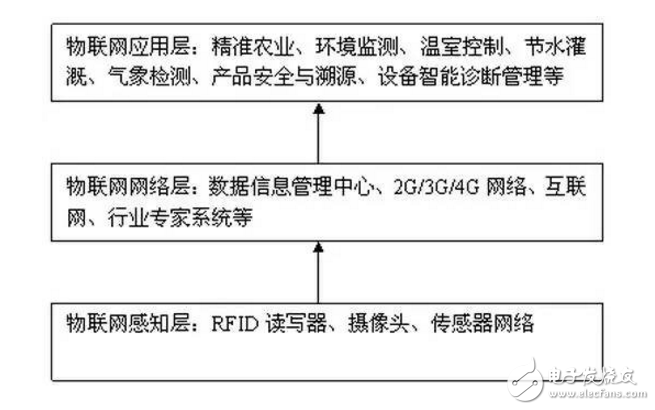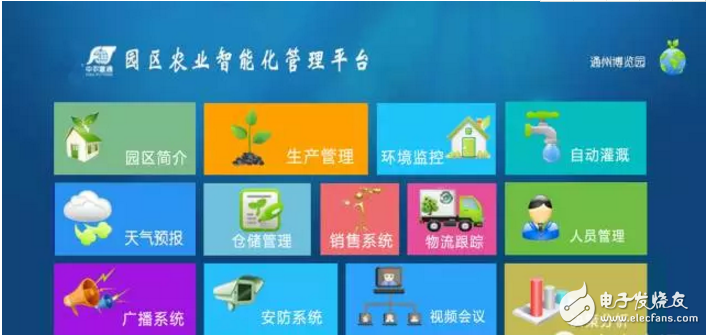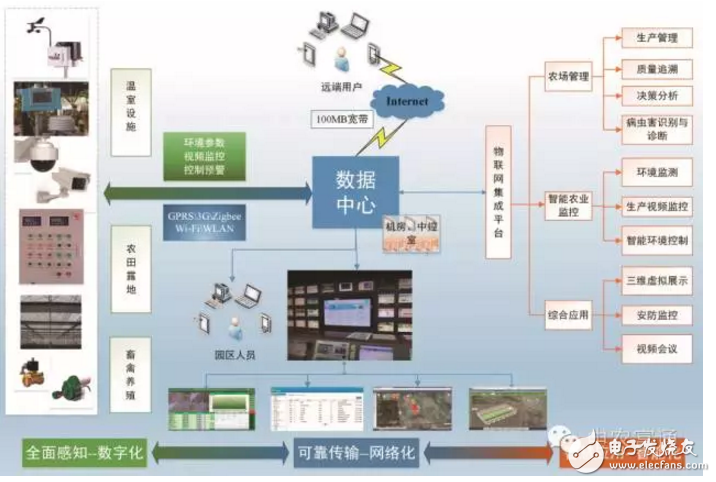In traditional farming, tasks like watering, fertilizing, and pest control have long relied on farmers' experience and intuition. Today, the question is no longer "should we water the crops?" but rather "how much water do they need?" and "how can we precisely manage fertilization and pesticide application?" Additionally, how can we ensure the optimal supply of temperature, humidity, light, and COâ‚‚ levels? These challenges have led to a transformation in agriculture, where crops are now monitored and managed with precision through smart systems. Each stage of growth is "fuzzy" in terms of data, but all are under real-time, quantitative checks by intelligent monitoring systems. Farmers simply need to press a button, make a choice, or follow automated commands to grow high-quality food and beautiful flowers. This is the power behind the Internet of Things (IoT) in agriculture.
About Agricultural Internet of ThingsThe Agricultural Internet of Things (AIoT) utilizes sensors such as temperature, humidity, pH, light, and COâ‚‚ sensors to monitor key environmental parameters like temperature, humidity, soil nutrients, and COâ‚‚ concentration. These real-time data points are used for automatic control, ensuring an ideal growing environment for crops. Remote monitoring allows farmers to manage multiple greenhouses from their office, while wireless networks help determine optimal conditions for crop growth. This not only supports precise greenhouse regulation but also enhances productivity, improves product quality, and increases economic efficiency.

The AIoT has become an essential tool for modern agriculture, enabling precise control over environmental factors that influence crop growth. By integrating various sensors, it provides accurate and timely data for decision-making. Farmers can remotely monitor and adjust conditions in different greenhouses, significantly improving management efficiency. Wireless technology helps identify the best conditions for crops, supporting scientific practices that increase yield, improve quality, and optimize production cycles.

The AIoT has gained popularity among agricultural producers due to its efficiency, convenience, and intelligence. Currently, its applications include:
1. Harvesting Control System
Large-scale farms often struggle with determining the best time to harvest crops using manual methods, which can lead to missed opportunities and reduced value. IoT-based harvesting systems use data and polling to predict the optimal time, increasing product value and reducing labor costs while improving scalability.
2. Processing Control System
Many agricultural enterprises still rely heavily on manual processing, which can result in inconsistent quality and contamination risks. IoT-based processing systems automate tasks like cleaning, preservation, and drying, reducing human interference and improving efficiency and product safety.
3. Acquisition, Circulation, and Sales Control System
These systems track market trends, monitor supply chains, and provide real-time updates on prices and demand. They also help ensure the safety of agricultural products during transport and distribution, enhancing transparency and consumer trust.
4. Video Surveillance System
Integrated with other systems, video surveillance enables real-time monitoring of farming activities, early warning of pests and diseases, and better oversight of production and processing. This helps technicians respond quickly and maintain smooth operations.
5. Traceability System
A traceability platform collects data from seed procurement to supermarket shelves, offering full visibility into the production process. It supports third-party supervision and ensures quality control, making it easier to trace the origin of agricultural products and address safety concerns.
Agricultural Internet of Things Development Trend1. Sensors will evolve into micro-intelligent devices, enabling more thorough perception. As sensor technology advances, their types and applications will expand, driven by innovations in microelectronics and computing.
2. Mobile internet will become more convenient, with broader network connectivity. High-speed mobile broadband is revolutionizing the information industry, leading to smarter, more personalized, and multi-functional services.
3. IoT will be deeply integrated with cloud computing and big data, leading to more optimized technology integration. Cloud computing supports distributed resource sharing, while big data enhances massive information processing capabilities.
4. IoT will shift toward smart services, expanding its application scope. As key technologies mature, IoT will move beyond industrial use to personal and home applications, offering flexible, environmentally aware solutions that adapt to changing needs.

For agricultural solution providers, the key challenge—and opportunity—is to offer more valuable, sustainable services beyond just products. Farmers care about results, so service providers must continuously improve functionality to deliver real benefits throughout the product lifecycle.
Supported by institutions like China Agricultural University and the Chinese Academy of Agricultural Sciences, Zhongnong Futong has partnered with international companies across four countries. By integrating advanced technologies with practical farming, they aim to achieve China’s “four synchronizations,†promoting agricultural modernization and efficient resource utilization. Their comprehensive AIoT solutions support horticulture, field planting, animal husbandry, and aquaculture, delivering tailored, scalable, and sustainable agricultural services.
Polycrystalline sillicon (also called: polysilicon, poly crystal, poly-Si or also: multi-Si, mc-Si) are manufactured from cast square ingots, produced by cooling and solidifying molten silicon. The liquid silicon is poured into blocks which are cut into thin plates. The solidification of the material results into cells that contain many crystals, making the surface of the poly-Si/ mc-Si cell less perfect than its mono-Si counterpart. Due to these defects, polycrystalline cells absorb less solar energy, produce consequently less electricity and are thus less efficient than monocrystalline silicon (mono-Si) cells. Due to their slightly lower efficiency, poly-Si/ mc-Si cells are conventionally a bit larger, resulting in comparably larger PV modules, too. This factor has to be considered if space is limited. Nevertheless, the advantage of poly-Si/ mc-Si cells is that they are easier and thus cheaper to produce.
Poly Solar Cell,Solar Photovoltaic Cell,Most Efficient Solar Cell,Polycrystalline Solar Cells
Wuxi Sunket New Energy Technology Co.,Ltd , https://www.sunketsolar.com